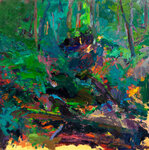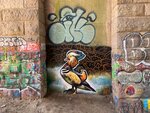Artists have long been inspired by the beauty and majesty of the Wissahickon Valley.
This item is available in full to subscribers.
We have recently launched a new and improved website. To continue reading, you will need to either log into your subscriber account, or purchase a new subscription.
If you are a digital subscriber with an active subscription, then you already have an account here. Just reset your password if you've not yet logged in to your account on this new site.
If you are a current print subscriber, you can set up a free website account by clicking here.
Otherwise, click here to view your options for subscribing.
Please log in to continue |












... Artists have long been inspired by the beauty and majesty of the Wissahickon Valley. The buildings, landscapes, trees, and the Wissahickon Creek itself have all been depicted in paintings, drawings, photographs, murals, sculpture, and other art forms throughout the centuries. The Woodmere Art Museum and other local museums and historical societies are fortunate to be the home to many of these treasures for visitors to enjoy today.
The works of art featured in this issue include a variety of pieces that span these years, from the early days of the European settlers to present day artists.
Contemporary photographer Ron Tarver took this tradition as inspiration when, in 2014, he brought photographers to the location where Walter Elmer Schofield (1866-1944) painted Wissahickon in Winter (c. 1920). Tarver’s idea was to explore how the Wissahickon Valley that had inspired one artist in the early twentieth century could still inspire others today. Tarver’s photograph Flow (2014) brings focus to the rushing energy of the Wissahickon Creek itself and the motion of water as it moves around a rock.
The revolutionary war-era painter James Peale (1749 – 1831), who fought in the battle of Germantown, was one of many much earlier artists to immortalize the native wildlife of the landscape with his depiction of a ruffed grouse.
A later painter, Violet Oakley (1874-1961) is yet another notable artist who found inspiration in these beautiful surroundings. Oakley painted all over the world, and her work includes the murals at the Pennsylvania State House in Harrisburg and portraits at the League of Nations in Switzerland. Yet she made her home here in the Wissahickon Valley, and found inspiration in this magnificent and verdant landscape. She and the Red Rose Girls moved to Coglsea, their home off St. George’s Lane in Mt. Airy, in 1906. One of her watercolors painted at Cogslea is featured here.
The Wissahickon Valley continues to inspire such artistic creativity today, and is the subject of many new works featured in local galleries and museums, including Woodmere. It’s even in the work by unattributed graffiti artists now found on certain structures in the park today.
So the next time you decide to take a walk through this storied landscape, consider taking a sketchpad with you.
Anne Standish is the Klorfine Foundation Director of Institutional Advancement at the Woodmere Art Museum.